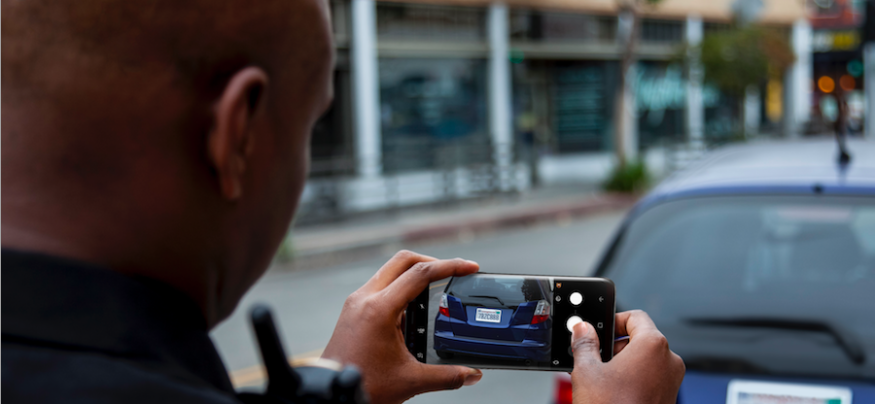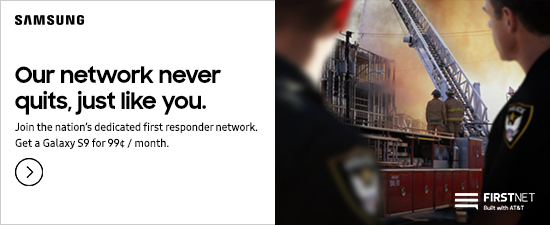Technology-driven force-multipliers have proven to be powerful tools for law enforcement in advancing public safety. License plate readers, in-vehicle video, body-worn cameras, and geolocation-specific resource management improve situational awareness and keep command and officers informed.
However, all the technology in the world is of no use if the information doesn’t get through to those who need it. That’s what the combination of mobile technology and prioritized broadband such as FirstNet is all about — making sure public safety data always gets to where it’s needed, regardless of other demands being placed on cellular networks.
A key component of FirstNet is the public safety core comprised of 20MHz of dedicated frequency spectrum, commonly known as Band 14. These additional FirstNet frequencies are in the 700MHz range, known for its effective signal propagation characteristics. It’s Band 14 that truly differentiates FirstNet from other networks, because the resulting public safety core assures users of FirstNet-ready devices that they will always have priority access to the network. Not only is public safety data given priority, but ruthless preemption will be invoked when necessary.
Here are a few examples of use cases where mobile devices and network priority are a game-changer for public safety.
Use Case: Bank Robbery Incident
Moments after a robbery suspect flees the bank, the bank manager forwards security camera images to dispatch. One shows the suspect brandishing a handgun and the other depicts the suspect entering the bank, clearly showing his clothing. The high-resolution photos are pushed to all patrol units, including officers on foot who are equipped with smartphones. A witness-provided plate number is loaded into the city’s license plate reader system that has several fixed locations using cellular backhaul.
Mobilizing Law Enforcement
Plan and implement a mobile initiative at your agency with this practical roadmap. Download Now
Within minutes, the LPR system locates the suspect vehicle, sending a photo to dispatch that is then shared with field officers. The vehicle is spotted and pursued into a large construction area, where the suspect flees on foot. A police commander coordinates the response and the establishment of a perimeter using livestream video from the responding air unit and the real-time locations of individual officers based on their smartphones.
In this scenario, the photos, LPR data, livestream video and real-time geolocation were reliably delivered to those who needed the actionable information.
Use Case: Handling a Large Protest
A mid-size police department is preparing for a planned protest, so a mobile command vehicle is positioned at a key location and a mast-mounted video camera is extended to maximum height. The camera can monitor a specific individual or view the whole scene to determine the size and direction of the crowd. Additional IP-addressable video cameras are strategically placed for maximum benefit. Screen shots from any video source, as well as streaming video, can be instantly sent to smartphone-equipped teams that can address issues before they get out of control.
Video is also sent to authorities in another city, where a similar recent protest had turned violent. Those officials will assist by identifying subjects who previously caused problems. Due to the anticipated crowd size, officers from an adjacent jurisdiction will be providing mutual aid. Talk groups can be utilized to facilitate group and individual communication, as well as the sharing of information like photos or diagrams.
Despite the crowd size and resulting demand placed on conventional cellular systems, public safety data described in this scenario will be given priority, assuring reliable continuity of operations.
Improving Situational Awareness
Situational awareness is a key consideration in law enforcement operations. Officers learn early in their careers that their working environment is often unstable and unpredictable; threats can come at any time and from any direction. Situational awareness is generally thought of at the individual level, but the widespread adoption of smartphones, tablets and wearables allow for greater recognition of operational dynamics that include supporting resources (like other officers) or evolving factors (such as sensor data).
Land mobile radio (LMR) is only capable of supporting basic voice, text and possibly low-resolution photo transmissions. Conversely, smartphones support transmission of data, including high-resolution photos, streaming video and data-intensive cloud-based files such as detailed building diagrams. Public safety personnel who are using FirstNet will be assured of prioritized network access, even during times of peak cellular demand. This transition will also permit agencies to leverage force-multiplying technologies like real-time sensor information and geolocation services that result in improved response and scene management.
By providing priority and preemption, FirstNet ensures there will be dedicated bandwidth to support important operations, even when there is high network demand. This means agencies can use technology force-multipliers to connect people, sensors and services to improve operational effectiveness and safety.
Learn more about mobile solutions for law enforcement that are improving officer safety and access to information.









